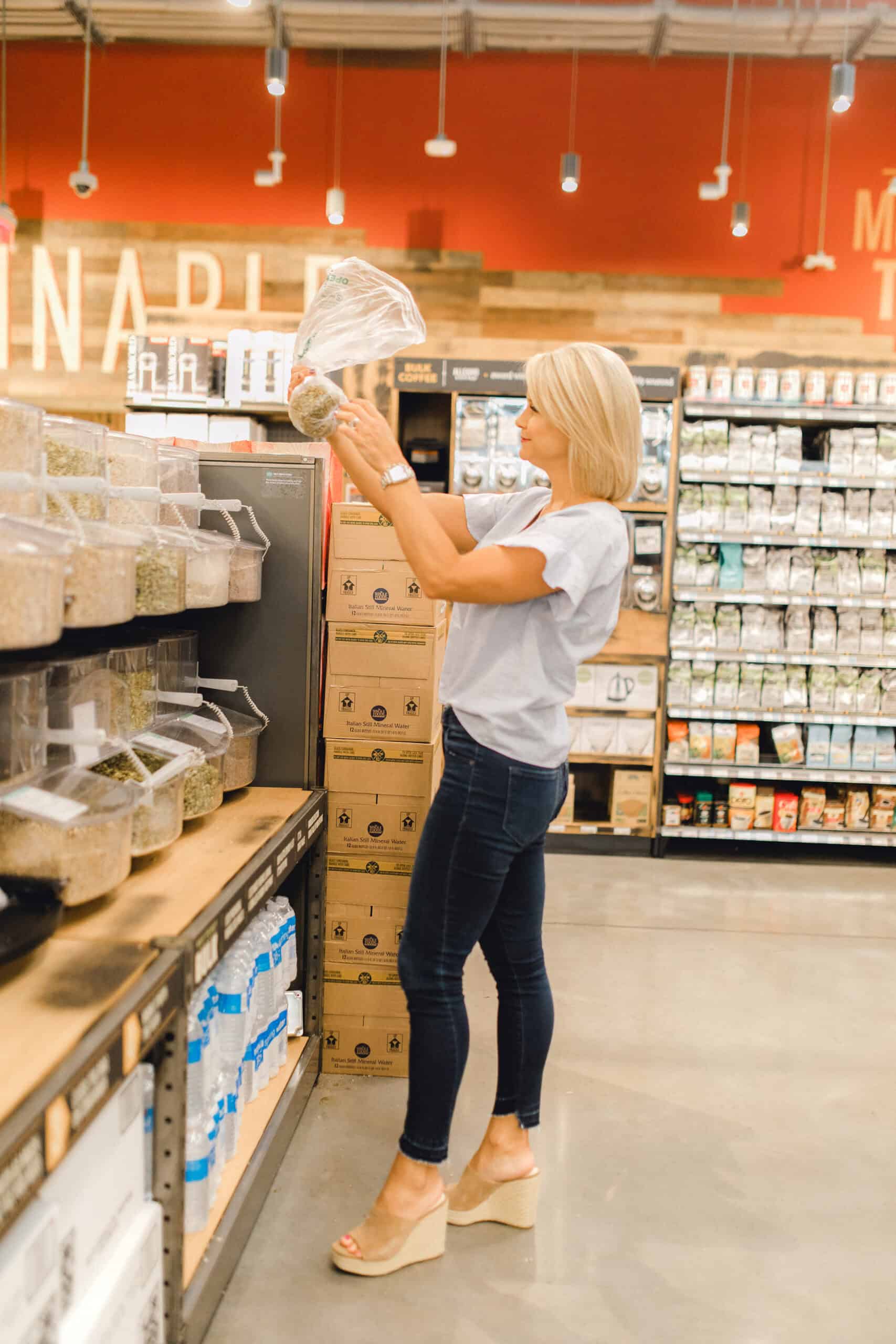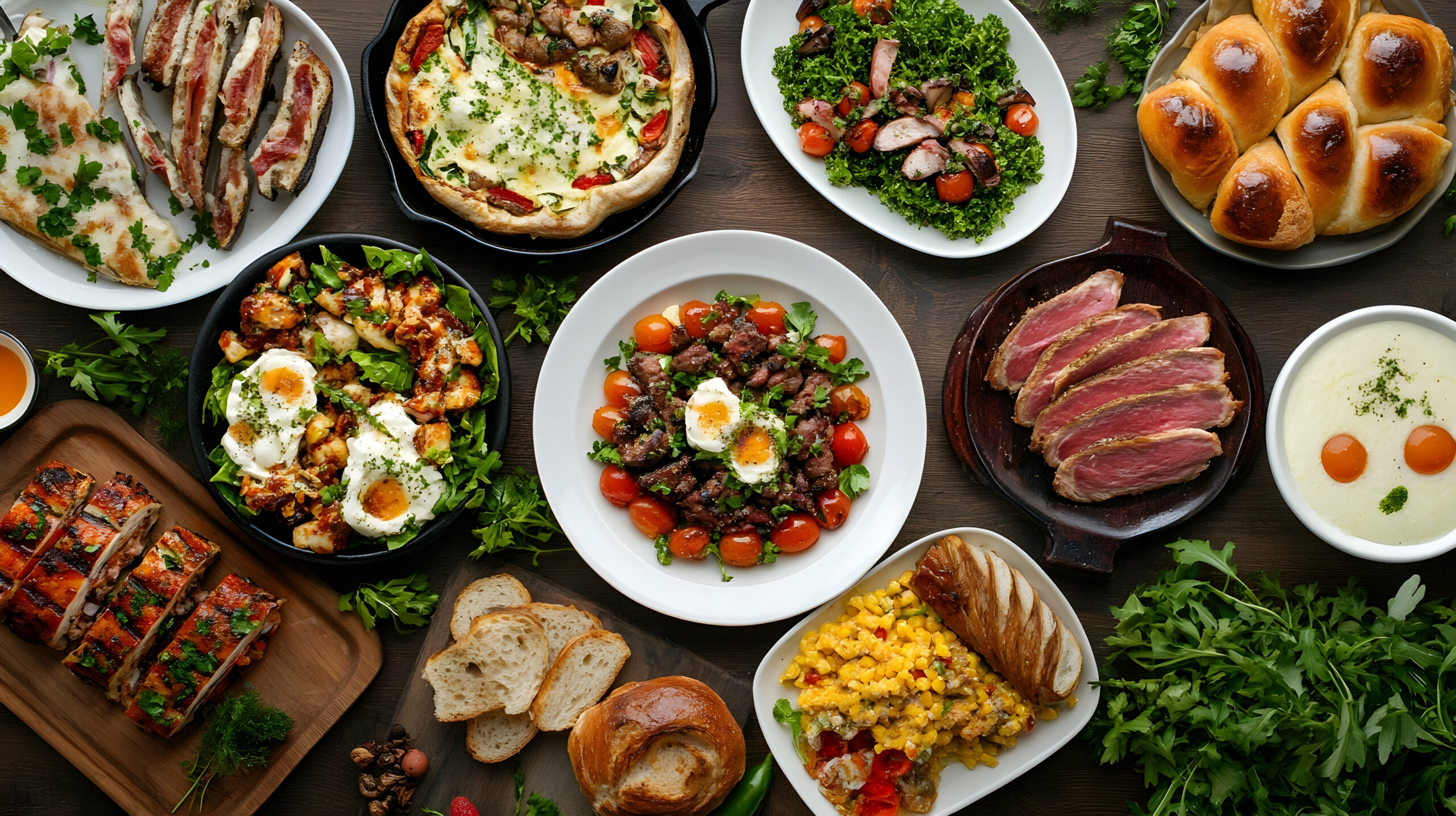It’s Sunday afternoon and you’re spending more time staring at the price tag under the eggs than it’d take to scramble and eat the whole dozen. Eggs are supposed to be the poor man’s food, but now they feel like a luxury buy.
Gone are the days when we could walk into a grocery store and buy a dozen eggs for $1.50 or a gallon of milk for under $3. Instead, nearly every food group costs more than it did a year ago. Eggs, meat, butter, flour, and bread prices are going up, up, up.
Eating healthy on a budget is harder than ever. But I love a good challenge. Today, you’ll get 10 tips on how to eat healthy on the cheap. Plus, I’ll throw in a list of my 25 favorite healthy foods that are budget-friendly.
10 Tips That’ll Save Your Grocery Budget
- Plan Your Menu Around Meat Sales
Meat is often the big ticket item on our grocery receipt. Before you menu plan and head to the store, check their website to see which meat is on sale. Then, plan your menu. - Use Flexible Recipes
Meal planning used to save money. But today, if the dinner you planned requires english cucumbers, you’re locking yourself into buying them, even if the price is outrageous. Instead, meal plan with more flexible recipes. These recipes give you a basic formula to follow, but you can switch out the meat, veggies, and grains with whatever is on sale. - Make Your Own Lunchmeat
Lunch meat rings in at about $12 a pound. But if you and the kids are hooked on lunch meat sandwiches, there’s a way to save big and still eat sammies. Check out my quick video that’ll show you how to cut your lunch meat cost in half. - Buy Whole Foods
Now’s your time to ditch the packaged products. Nutritionally speaking, we need whole fruits, veggies, meat, beans, grains, nuts, and seeds to thrive. These foods will make us feel amazing, and sticking with them will save us a few pennies too. Skip the snack aisle. Most of those foods will add nothing but empty calories to your diet, increase weight gain, and jack up your grocery budget. - Check What You Already Have
Before you buy one too many loaves of bread or let another bag of spinach get slimy and forgotten in the fridge, check your kitchen. Take inventory of what you already have at home before you make your grocery list. This doesn’t have to take long. Even snapping a picture of your fridge and cabinet can help you not buy double when you’re at the store. - Stock Up on Frozen Fruit and Tinned Tomatoes
Fresh produce can go on sale, but it’s often more expensive than the frozen or shelf stable stuff. Frozen mixed veggies, peas, and spinach can add a nutritious boost to soups, stews, and stir fries. Canned tomatoes are a pantry staple. Frozen berries are often picked at peak ripeness, so some argue that they’re healthier and more nutritiously dense than the fresh berries you buy in the carton (which are picked before they’re ripe). - Use The Whole Buffalo
Throughout the week, save the ends and leftover halves of carrots, cabbages, sweet potatoes, and onions. Keep your meat bones and store them in the freezer. Save the ends of strawberries, your apple cores, and overripe bananas for smoothies or juices. - Make Scrappy Sunday Dinner
At the end of the week, scan your fridge for any produce that’s not looking so hot. Freeze it or cook it up for a scrappy Sunday dinner. Stir fries, soups, and omlets are great for using up those small bits and pieces. - Pick Plant Based Proteins
Beans and lentils promote healthy gut bacteria and they modulate blood sugar levels—two factors that affect our BMI. They’re high in protein, fiber, and resistant starch while low in calories. Beans also help satisfy our appetites and keep us full for longer. Plus, they’re cheap as dirt! Whip up some legume-laden chili, curry, or soup, and save some change. - Garden Within Reason
I’m not going to tell you to start a farm. But a small herb garden is a different story. First, herbs are low maintenance plants that are extremely easy to keep alive. Second, buying herbs at the grocery store regularly is pretty darn expensive.
Hardy herbs, like rosemary, oregano, and thyme can transform a simple soup or roast, and they’re hard to kill. Soft herbs, like cilantro, basil, and mint plants can be plopped into a pot on your porch and used all summer.
25 Cheap and Healthy Foods That’ll Help You Save
Though prices are rising, these nutritious foods are still easy on your wallet.
- Green cabbage
- Potatoes
- Rutabega
- Carrots
- Spinach
- Frozen Peas
- Canned Tomatoes
- Bananas
- Oranges
- Apples
- Cantaloupe
- Frozen Fruit
- Beans
- Lentils
- Sunflower Seeds
- Peanuts and Peanut Butter
- Flax Seeds
- Walnuts
- Eggs
- Plain Yogurt
- Canned Wild Tuna
- Bone In Chicken
- Oats
- Millet
- Brown Rice
Budget Your Way to Better Health
Try out these money-saving hacks and see how much you save on groceries this week!
Looking for more ways to pinch a penny on your health journey? Check out my free guides—you’ll steal my secrets on meal planning, macros, making healthy habits, and more.




